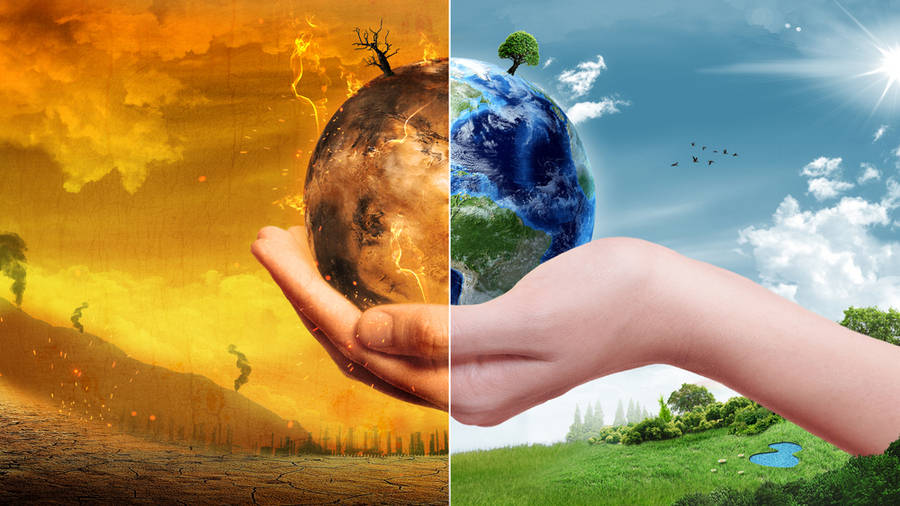The United States of America is set to formally re-enter the Paris Agreement this week. On assuming the presidency of the US, Joseph R. Biden accepted the Paris Agreement and every article and clause thereof on behalf of his country. The US’s engagement is critical to but not necessarily sufficient for the success of the Conference of Parties in Glasgow in November, where it is expected that the parties to the Paris Agreement will finalize the rules of how the Agreement will operate in the future. I am, at best, cautiously optimistic. Donald Trump’s presidency has demonstrated the fragility of the institutional arrangement. Institutional arrangements will likely become more robust in the future and whims of an individual may not be able to derail global arrangements, but it might happen too late and the narrow climatic envelope of about 11 degrees Celsius to 15 degrees Celsius mean annual temperature may be breached by then.
For millennia, humans have operated in a fairly narrow subset of earth’s available climates, transforming labour, capital, energy, and other natural resources into new goods or services. This is possibly a reflection of the human temperature niche; all species have an environmental niche. According to a recent study, the human population distribution in relation to MAT has remained largely unaltered, with a major mode around 11 degrees Celsius to 15 degrees Celsius accompanied by a smaller secondary mode around 20 degrees Celsius to 25 degrees Celsius corresponding to the Indian monsoon region.
It has been found that globally economic productivity is non-linear in temperature, with productivity peaking at MAT of 13 degrees Celsius and declining strongly at higher temperatures, both for agricultural and non-agricultural activity, irrespective of the economic condition of the countries. If societies continue to function as they have in the recent past, geographical position of this temperature niche is projected to shift more over the next 50 years than it has in the last 6,000 years. Climate change is expected to reshape the global economy by substantially reducing global economic output.
Over the coming decades, the human climate niche is projected to move to higher latitudes. “Draw a line around the planet at the latitude of the northern borders of the United States and China, and just about every place south, across five continents, stands to lose out.” Under such circumstances, what option does India have, given its large population that is dependent on climate-sensitive sectors and allied services?
While some regions may face declining conditions for human thriving, conditions in other places will improve. As the world warms, no country stands to gain more than Russia. By 2080, Russia’s permafrost in the Asian part of the country will be reduced by more than half, potentially making more than five million square kilometres available for farming. A great transformation is already underway in the eastern half of Russia. Wild forests, swamps and grasslands, land that was once impossible to farm are for the last two decades bearing soya bean, corn and wheat. Russia could become the largest food producer on the planet, provided they have enough people to work the land. The Russian population, after a period of miniscule growth between 2008 and 2018, is again on the decline.
Could Russia and India forge a partnership as they have done in case of exploration, development and production of oil and gas in the Russian Far-East? ONGC Videsh Limited, which is in the business of prospecting for oil and gas acreages outside India, has three of its oil and gas assets in the Russian Far-East. The State Farms Corporation of India Limited could be refashioned along the lines of OVL to prospect for agricultural acreage outside India. However, not all thawed land will be suitable for farming and neither will the thaw occur overnight. Therefore, SFCIL or a similar entity should start prospecting now. The OVL was founded in 1965 and its current oil and gas assets stand at 37, producing about 30.3 per cent of oil and 23.7 per cent of oil and natural gas of India’s domestic production in 2019-20. In time, OVL could surpass its parent, ONGC, in terms of reserves and production. Similarly, in the decades to come, SFCIL could account for higher agricultural production and ensure India’s food security despite declining domestic production. India’s national per capita income is projected to be nearly 92 per cent less by the year 2100.
Repurposing a company like SFCIL is just one part of the solution. India will have to consider shipping hundreds of thousands of workers to the Russian Far-East to make it a win-win for itself and Russia. This might seem like an insurmountable challenge but India already sends hundreds of thousands of IT professionals where there weren’t any just 40 years ago. In spite of the formidable psychological, social, and political barriers to migration, seasonal or permanent, a change in the geographical distribution of human populations and agricultural production is almost inevitable.











